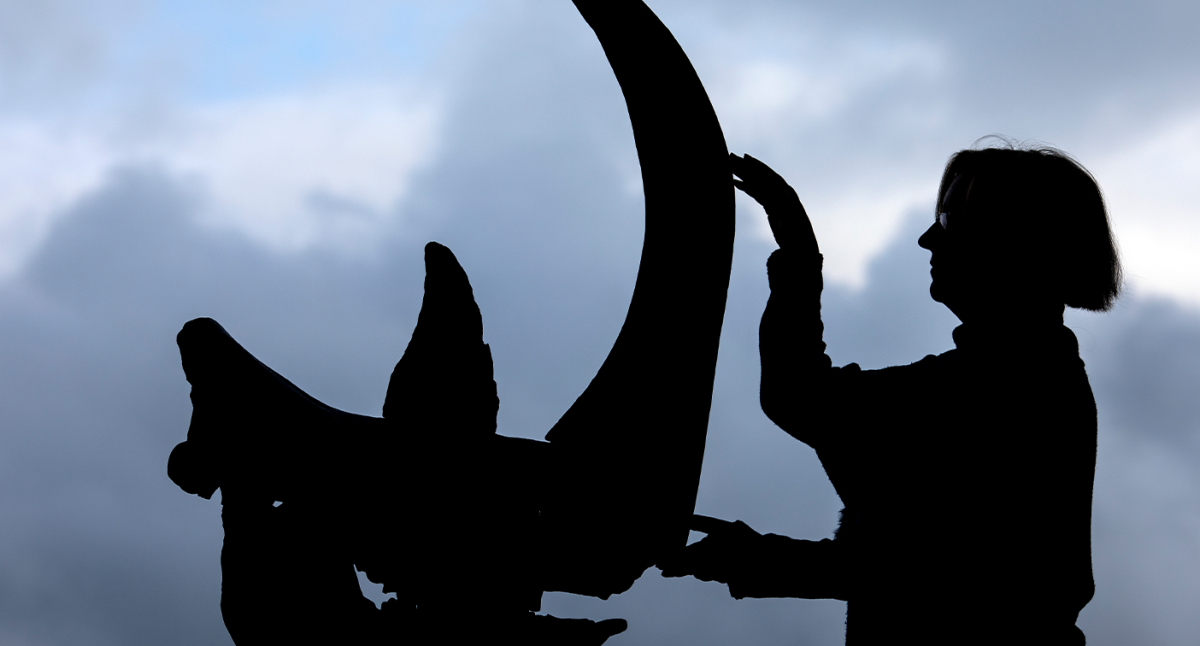A 10,000-year-old mystery about what led to the extinction of one of the world’s last megafauna has been solved.
The woolly rhinoceros stood nearly two meters tall and had a meter long horn. But the creature, which roamed Eurasia for about 3.6 million years, was wiped out by human activity, a new study from the University of Adelaide and the University of Copenhagen has revealed.
Looking back over 52,000 years of history, the researchers used ancient DNA, fossils and new computer modeling with enhanced resolution researchers had not previously considered possible to track species extinction.
The team found that 30,000 years ago, sustained low hunting combined with cooling temperatures forced the species to move south. These fragmented populations became isolated and vulnerable as the last remaining habitat deteriorated with the end of the last Ice Age.
“As the Earth melted and temperatures rose, woolly rhinoceros populations were unable to colonize important new habitats opening up in northern Eurasia, causing them to destabilize and collapse, leading to their extinction,” the author explained. principal, Associate Professor Damien Fordham.
The new research overturns a previous belief that humans played no role in the extinction of the species.
Connected: The silent disappearances that go unreported across Australia
More on the world’s ongoing extinction crisis
Have humans learned anything from the extinction of the woolly rhinoceros?
There are several species, such as the shaggy-haired muskrat, which lived in the time of the woolly mammoth and lived in the ice age. It is believed to have survived due to cycles of boom and bust reproduction, which helped it bounce back after population declines caused by climate change.
They are native to the Arctic and have continued to live in northern Canada and Greenland. The Alaskan population became extinct in the late 19th or early 20th century, but was later reintroduced.
Most of Earth’s 61 species of land-based mega-herbivores of the late Pleistocene period are now extinct—and only eight land animals weighing more than a ton remain.
Of these, five are rhinos, all of which face constant threats from poachers. At the beginning of the twentieth century, there were an estimated half a million rhinos across Asia and Africa. By 1970, that number had dropped to just 70,000, and today there are fewer than 27,000.
And it just gets worse from there. In May it was revealed that 13 poachers had boasted of slaughtering 26 critically endangered Javan rhinos in Indonesia – roughly a third of the remaining population.
As long as there is black market interest in the illegal horn trade, which is used as an aphrodisiac in some Asian countries, the future of the rhinoceros will not be certain. But researchers hope their investigation into the extinction of the woolly rhino will help prevent the extinction of the modern species from climate change and poaching.
“This understanding is essential for developing conservation strategies to protect currently threatened species, such as vulnerable rhinos in Africa and Asia. By studying past extinctions, we can provide valuable lessons for the conservation of Earth’s remaining large animals,” said co-author Professor David Nogues-Bravo.
The study is published in the journal PNAS.
Love Australia’s weird and wonderful environment? Take ours new bulletin featuring the best stories of the week.
